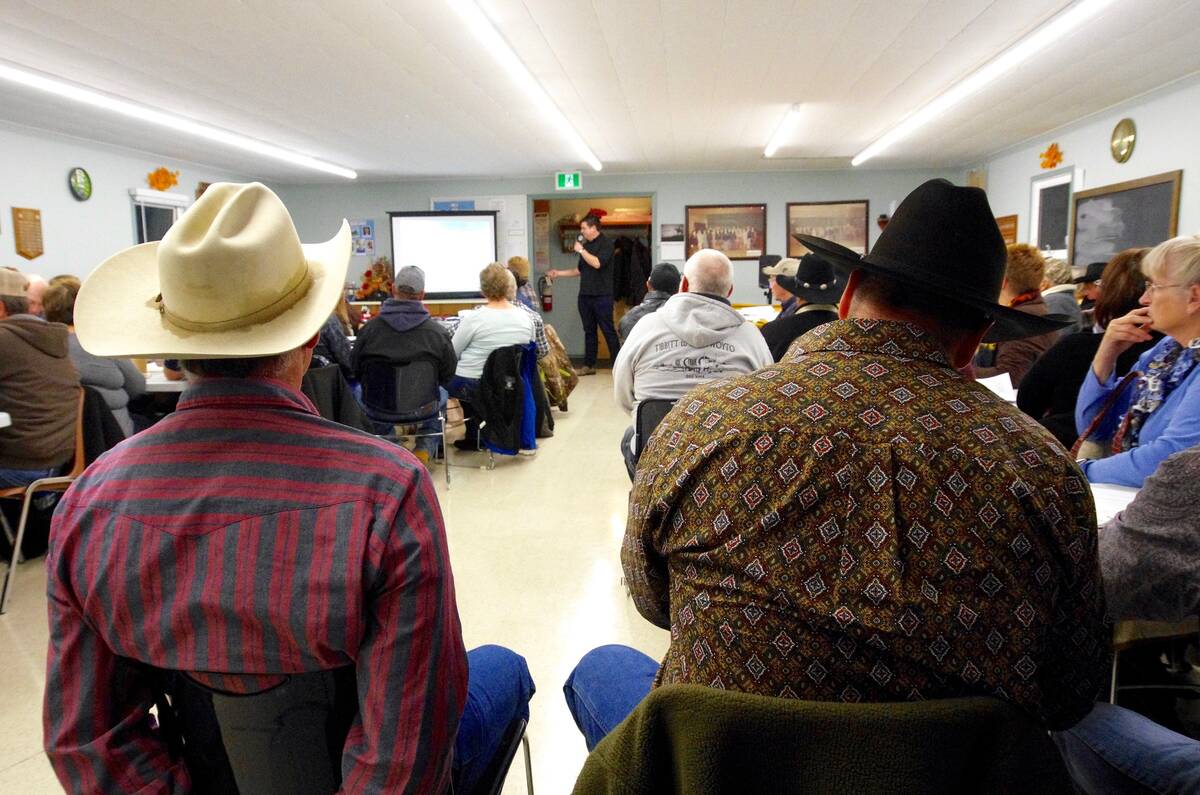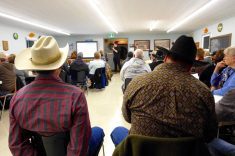I just listened to a talk by two technical services veterinarians with Merck animal health.
What I liked about the presentation was they broke down the different disease categories we have on our farms and ranches, and went over what probably would be the first choice for an NSAID (non-steroidal anti-inflammatory drug) and the second choice for an NSAID.
It solidified for me that, much like antimicrobials, you have a first choice and a second choice.
Read Also

Don’t blow off that beef producer meeting
Local veterinarians and livestock experts often speak at beef producer group events. They have good advice for the farmer on vaccines, calving, beef herd management and more.
They were unanimous in saying that using some NSAID was better than not using any. It is true that nowadays with most injuries, diseases, and processes, antimicrobials sometimes are the secondary or ancillary treatment — not the other way around.
Under the supervision and guidance of your veterinarian, most of you should have at least the two main classes of painkiller anti-inflammatory drugs. In feedlot situations, that may be three if using the ketoprofen molecule (Anafen) which has the very short withdrawal time for meat.
The dairy world is a little different in the sense that there is the milk withdrawal to consider. Some of the products do not have a dairy claim, so be careful of that.
Research by different companies has led to various label claims and they pursued them because the product was good at that or on the newer products that label claim had not been pursued. There are also the different formulations one must consider, and convenience comes into play when one is comparing injectable versus oral versus pour-on.
With all these categories of disease processes, they mainly compared the flunixin (sold under Banamine flunazine BanamineTD and other trade names) molecule and the meloxicam (Metacam, rheumacam oral meloxicam and other trade names) molecule.
So does your standard operating procedures list (created in consultation with your veterinarian) have a first, recommended NSAID to use and then the second for each situation?
This would be similar to what we do for respiratory disease, which is to have a first, second and sometimes third choice antimicrobial. We now have that luxury with painkillers in that there are multiple products given multiple ways and multiple companies have them. This is all great news for the Canadian cattlemen.
The two technical services veterinarians talked first about the adverse-type events — such as using Banamine before calving will lead to a 2.5 times the rate of retained placentas (so that is something worth considering). Also with the Banamine molecule, they talked about gastric ulcers at high levels. But this is toxicity at three to five times the level and erosive lesions at the regular dose for nine days — but nobody does that or nobody should do that. Stick with the regular dose and if repeated, it’s usually every two to three days (most times, NSAIDs are usually a one-time usage). Lameness is probably the one pain application where NSAIDs may be used several times.
For scours, we have meloxicam on the label. If calves are also endotoxic then flunixin has proven useful. What they are looking at is whether one NSAID is slightly better than the other in specific conditions.
We have always wondered how many cattle are given NSAIDs (such as oral meloxicam at castration or branding) when vaccines are given. There is no detrimental effect in regard to the protection given by vaccines if administered at the same times as NSAIDs. This study was done at feedlot entry so we can infer that the same thing should apply at turnout when vaccines, branding, castration, and NSAIDs are given at the same time.
When it comes to taking down temperature quickly, Banamine is the sure winner here. With lameness, all products are pretty effective and the Banamine pour-on had lameness decreased for 72 hours (which means that if a second treatment is needed, it would not be for three days).
With surgery, meloxicam has the label claim for abdominal surgery. With bad metritis or mastitis if there is endotoxemia (meaning the cow is very toxic looking), then flunixin (Banamine is the common trade name) is one that should be used intravenously to get quick and high blood levels.
Another newer application may be with embryo transfer in order to minimize inflammation while putting in the embryo and the reduction of the prostaglandin effect. Studies have found a five per cent improvement in conception with herds that normally had a lower 50 per cent conception rate. My caution here is that if conception rates are already decent, improvement might be minimal. Here, Banamine pour-on TD would be one to use so the cow is not stressed when implanting the egg.
With any other painful conditions such as lumpy jaw, wooden tongue, peritonitis or any injuries, we are always thinking NSAIDs first and other products become our ancillary treatments. Think of a quicker return to normal function when NSAIDs are used and think of what the beef codes recommend in all these situations.
The nice thing about NSAIDs is the improvement in the clinical presentation is almost immediate and often treatment times may be shortened and may remove the need for antibiotics in some cases. We need to always educate the public why we do it and that we recognize the meat withdrawals on these products. Most people are pleasantly surprised by how cattle are looked after.
If needing to use on dairy cattle and no indications on the label, your vet can phone CgFARAD (the Canadian Global Food Animal Residue Avoidance Database) and get a recommendation on milk withdrawal on a case-by-case basis. If not on the label, get a recommendation before you treat.
















